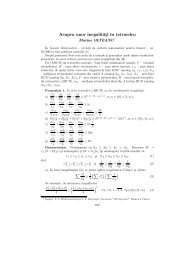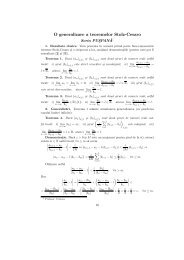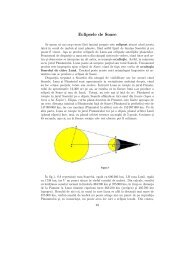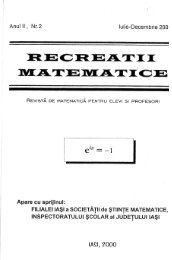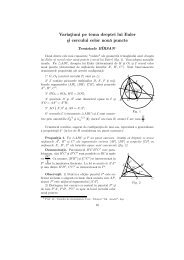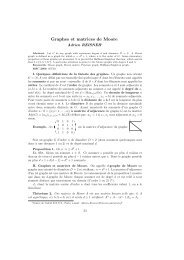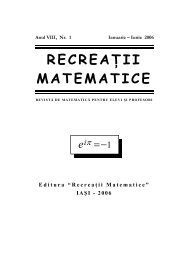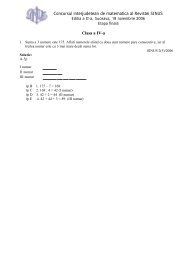Revista (format .pdf, 1.0 MB) - Recreaţii Matematice
Revista (format .pdf, 1.0 MB) - Recreaţii Matematice
Revista (format .pdf, 1.0 MB) - Recreaţii Matematice
You also want an ePaper? Increase the reach of your titles
YUMPU automatically turns print PDFs into web optimized ePapers that Google loves.
p 1 2 3 4 6 12 19 38 57 76 114 228<br />
q 228 114 76 57 38 19 12 6 4 3 2 1<br />
x −45 − 108 − 67 17 108 167<br />
683<br />
−9 −4 9<br />
45 68<br />
5 5<br />
5 5 5<br />
5<br />
y 91 22 14 1 −14 −22<br />
În concluzie, avem perechile de soluţii (−45, 91), (−9, 22), (−4, 14), (9, 1), (45, −14)<br />
şi (68, −22), împreună cu variantele negative (45, −91), (9, −22), (4, −14), (−9, −1),<br />
(−45, 14) şi (−68, 22).<br />
6. Găsiţi toate perechile de numere întregi x şi y care sunt soluţii ale ecuaţiei<br />
diofantice 2x 2 +3y 2 =77.<br />
Soluţie. Dacă perechea(x, y) este soluţie, atunci şi perechile (−x, y), (x, −y)<br />
şi (−x, −y) sunt soluţii. E suficient să considerăm soluţiile nenegative. Deoarece<br />
x 2 ≥ 0 avem 0 ≤ 3y 2 ≤ 77 sau 0 ≤ y ≤ 5. y nu poate fi par, deoarece 2x 2 este par<br />
şi 77 este impar. E destul să dăm lui y valorile 1, 3 şi 5. Ultimele două furnizează<br />
valori întregi pentru x. Obţinem (x, y) =(1, 5), (5, 3) şi (x, y) =(−1, 5), (1, −5),<br />
(−1, −5), (−5, 3), (5, −3), (−5, −3).<br />
7. Considerăm numărul natural n, 1000 ≤ n



